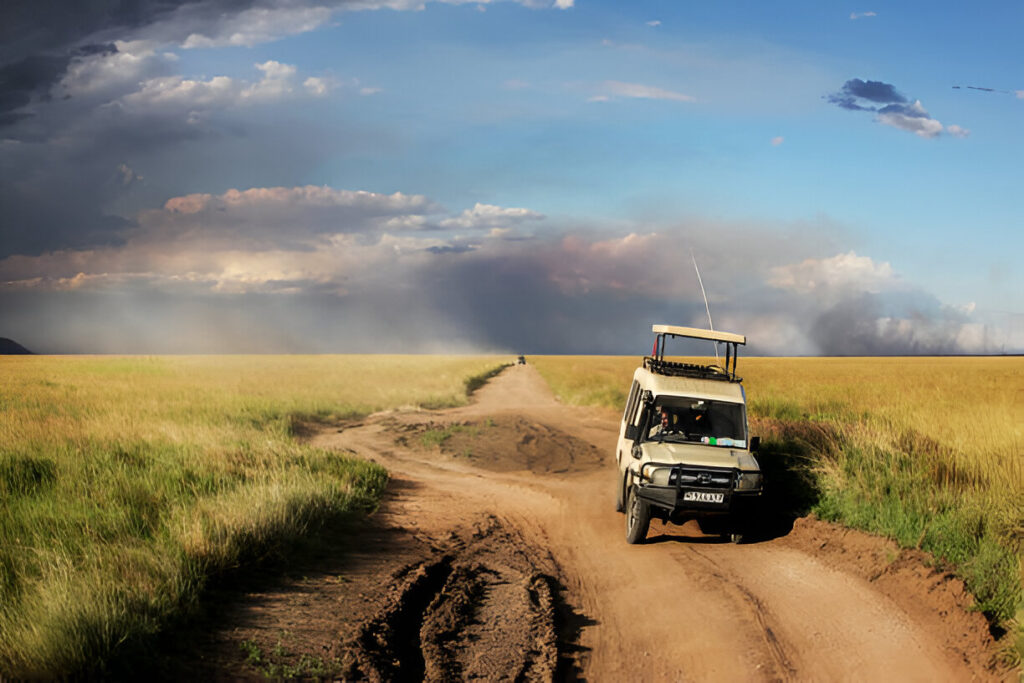Going on a safari in Tanzania is a unique experience that takes you into a world where you can experience the magnificence and awe of nature up close. It’s an adventure that catapults you into Tanzania’s extensive canvas of ecosystems, each teeming with diverse wildlife and breathtaking landscapes. Famous for the annual Great Migration, Tanzania is a beacon for those seeking an authentic and raw experience in the heart of Africa. Tanzania’s rich wildlife is accompanied by its vibrant cultural tapestry, offering unforgettable encounters with nature and unique interactions with local communities. This guide will help you meticulously plan your safari, ensuring you make the most of what Tanzania has to offer, coupled with practical advice and safety tips. Whether you are a novice explorer or an experienced journeyer, Tanzania ensures a thrilling experience full of lasting memories.
Contents
Table of Contents
- Introduction to Tanzanian Safaris
- The Best Time to Visit Tanzania
- Top National Parks and Reserves
- Unique Wildlife of Tanzania
- Cultural Experiences on Safari
- What to Pack for a Safari Adventure
- Safety Tips for Safari Goers
- Choosing the Right Safari Tour
Introduction to Tanzanian Safaris
A Tanzania safari invites you to explore an array of ecosystems as varied as they are beautiful. From the iconic savannahs of the Serengeti National Park to the lush highlands of the Ngorongoro Crater, Tanzania provides habitats that host some of the planet’s most remarkable wildlife populations. The country’s dedication to conservation ensures that these environments remain a refuge for species for generations to come. Visitors are drawn to this accessibility to nature in its purest form, where one missteps into a world millions of years in the making, where nature’s raw beauty commands respect and admiration.
The Best Time to Visit Tanzania
Timing is crucial when planning a safari to maximize wildlife sightings and comfort. The dry season, spanning from late June to October, is considered optimal for safaris, as vegetation is sparse and animals converge at shrinking water sources, making them easier to spot. It is crucial to plan your trip between July and October if you want to see the Great Migration when large herds of wildebeest and zebras move across the plains looking for better grazing. For more details on crafting your safari around these magnificent events, National Geographic provides excellent resources to enhance your planning further.
Top National Parks and Reserves
Serengeti National Park
The world-renowned Serengeti National Park is at the heart of Tanzania’s safari offerings. Known for the Great Migration, this UNESCO World Heritage Site spans over 14,763 square kilometers, providing a sanctuary for an unparalleled concentration of wildlife, including nearly 70 mammal species. The extensive grasslands and impressive scenery of the Serengeti attract predators like lions, cheetahs, and hyenas that track the seasonal migration of millions of wildebeest, zebras, and gazelles.
Ngorongoro Conservation Area
Adjacent to the Serengeti lies the Ngorongoro Conservation Area, another UNESCO-protected gem. The centerpiece, the Ngorongoro Crater, is the world’s largest inactive volcanic caldera, providing a unique biodiversity haven where some 25,000 large animals roam freely. The area is also home to the semi-nomadic Maasai communities, who coexist with the wildlife in a harmonious balance, offering visitors a chance to engage with Tanzania’s traditional cultures.
Selous Game Reserve
For those explorers seeking a more off-the-beaten-path experience, the Selous Game Reserve offers an exclusive adventure. Spanning an area larger than many small countries, Selous is among the largest protected areas on the continent. It offers diverse activities, including walking safaris and boating on the mighty Rufiji River, affording unique perspectives of Tanzania’s wildlife in lesser-explored environments.
Unique Wildlife of Tanzania
Tanzania’s extensive protected areas are home to an extraordinary range of wildlife. In addition to the famous Big Five—lions, leopards, elephants, buffalo, and rhinoceroses—Tanzania supports giraffes, hippos, and numerous primate species. Rare and hard-to-find species like the African wild dog and the black rhinoceros can also seek shelter in places like Ruaha National Park. This makes it valuable for tourists and those dedicated to preserving wildlife.
Cultural Experiences on Safari
While Tanzania’s wildlife often steals the limelight, its cultural heritage is equally captivating. The Maasai and other indigenous groups provide safari-goers with richly rewarding experiences, offering glimpses into age-old traditions and deep-rooted connections to the land. Engaging with these communities can add layers of understanding about the human aspects of the Tanzanian wilderness, showcasing customs, crafts, and stories passed down through generations.
What to Pack for a Safari Adventure
Packing wisely for your safari can dramatically enhance your experience, allowing you to focus on the magnificent sights rather than what you forgot. It is recommended to wear clothing in neutral colors that blend into the natural surroundings to prevent disturbing wildlife. A large-brimmed hat and shades shield you from the sun, as a good camera helps you take photos of the fantastic views. A pair of binoculars can transform distant figures into vibrant, detailed encounters, and not overlooking necessities like a flashlight and insect repellent is paramount for your comfort.
Safety Tips for Safari Goers
Your safety during a safari is paramount, and following your safari guide is critical to a safe adventure. Guides are trained to keep you out of risky situations, especially around wildlife. Stay informed about health precautions relevant to Tanzania, including recommended vaccinations and travel medications. Carrying a personal first-aid kit is also advisable for addressing minor injuries. Resources such as the World Health Organization provide updated health information to assist you in your preparations.
Choosing the Right Safari Tour
Selecting a suitable safari tour involves considering various factors, including budget, desired experiences, and accommodation styles. Whether you seek a rustic camping adventure or a luxury lodge experience, numerous options are tailored to different tastes. Conduct thorough research, compare customer reviews, and consult with safari operators to ensure your chosen tour meets your expectations and personal interests, paving the way for a rewarding Tanzanian safari experience.



